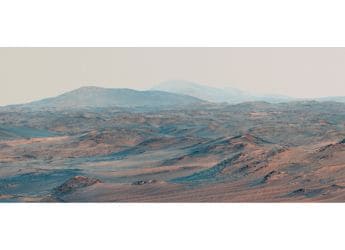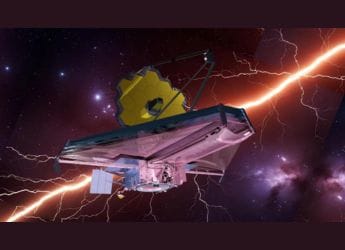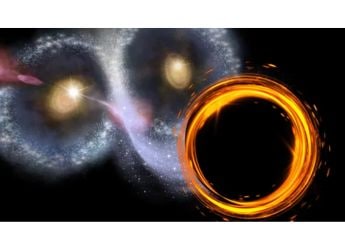- Home
- Science
- Science News
- How Does the Cat's Eye Nebula Sound Like? NASA Post Offers an Idea
How Does the Cat's Eye Nebula Sound Like? NASA Post Offers an Idea
Cat’s Eye Nebula, also known as NGC 6543, appears like an onion cut in half, where each skin layer is discernible.

Photo Credit: NASA, ESA, HEIC, and The Hubble Heritage Team
Cat’s Eye Nebula is marked by its onion-like ring structure
A nebula is a giant cloud of dust and gas occupying the space between stars. We have seen many images of different kinds of nebulae, thanks to the observatories scientists have made over the years. Now, can you imagine how these cosmic clouds appear when interpreted as sound? NASA‘s Hubble Space Telescope has shared a video on Instagram that shows sonification of data of Cat's Eye nebula captured by it and the agency's Chandra X-ray observatory. “Experience the Cat's Eye nebula through sound,” the post said.
A planetary nebula forms when Sun-like stars eject their outer gaseous layers to form bright nebulae. Scientists believe that the Cat's Eye Nebula, also known as NGC 6543, was formed after the star ejected its mass in a series of pulses at 1500-year intervals. And thus, the image appears like an onion cut in half, where each skin layer is discernible. It shows a bull's eye pattern of eleven or even more concentric shells around the "Cat's Eye". Each shell is the edge of a spherical bubble.
Astronomers have proposed several explanations for these rings-like patterns, including cycles of magnetic activity somewhat similar to our own Sun's sunspot cycle and stellar pulsations.
This information is represented as music using the data sonification technology. The post said X-rays from the Chandra observatory are represented by a harsher sound, while the visible light data from Hubble sound smoother.
“A radar-like scan of the image emanates from the centre point of the nebula and moves clockwise to produce pitch. The light that is further from the centre is heard as higher pitches while brighter light is louder,” the post said. The circular rings create a constant hum.
NASA said when a star like the Sun begins to run out of helium to burn, it blows off huge clouds of gas and dust. These outbursts can form spectacular structures such as the one seen in the Cat's Eye nebula.
The Hubble telescope has been serving for over 30 years. It will soon be succeeded by the costlier, more powerful James Webb Space Telescope.
Get your daily dose of tech news, reviews, and insights, in under 80 characters on Gadgets 360 Turbo. Connect with fellow tech lovers on our Forum. Follow us on X, Facebook, WhatsApp, Threads and Google News for instant updates. Catch all the action on our YouTube channel.
Related Stories
- Samsung Galaxy Unpacked 2025
- ChatGPT
- Redmi Note 14 Pro+
- iPhone 16
- Apple Vision Pro
- Oneplus 12
- OnePlus Nord CE 3 Lite 5G
- iPhone 13
- Xiaomi 14 Pro
- Oppo Find N3
- Tecno Spark Go (2023)
- Realme V30
- Best Phones Under 25000
- Samsung Galaxy S24 Series
- Cryptocurrency
- iQoo 12
- Samsung Galaxy S24 Ultra
- Giottus
- Samsung Galaxy Z Flip 5
- Apple 'Scary Fast'
- Housefull 5
- GoPro Hero 12 Black Review
- Invincible Season 2
- JioGlass
- HD Ready TV
- Laptop Under 50000
- Smartwatch Under 10000
- Latest Mobile Phones
- Compare Phones
- OnePlus 15R
- Realme Narzo 90x 5G
- Realme Narzo 90 5G
- Vivo S50 Pro Mini
- Vivo S50
- OPPO Reno 15c
- Redmi Note 15 5G
- Redmi Note 15 Pro 5G
- Asus ProArt P16
- MacBook Pro 14-inch (M5, 2025)
- Infinix Xpad Edge
- OnePlus Pad Go 2
- OnePlus Watch Lite
- Just Corseca Skywatch Pro
- Acerpure Nitro Z Series 100-inch QLED TV
- Samsung 43 Inch LED Ultra HD (4K) Smart TV (UA43UE81AFULXL)
- Asus ROG Ally
- Nintendo Switch Lite
- Haier 1.6 Ton 5 Star Inverter Split AC (HSU19G-MZAID5BN-INV)
- Haier 1.6 Ton 5 Star Inverter Split AC (HSU19G-MZAIM5BN-INV)

















